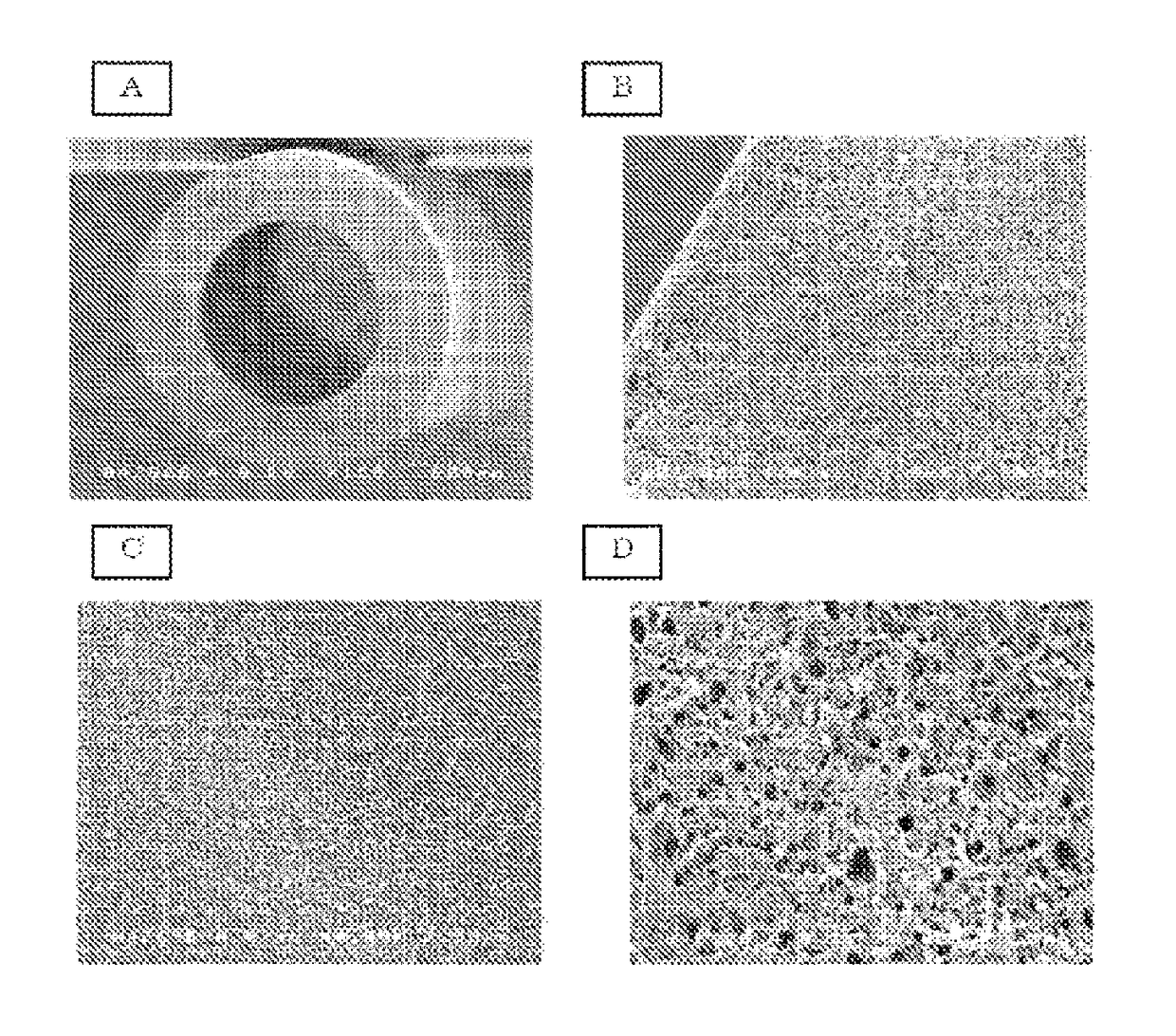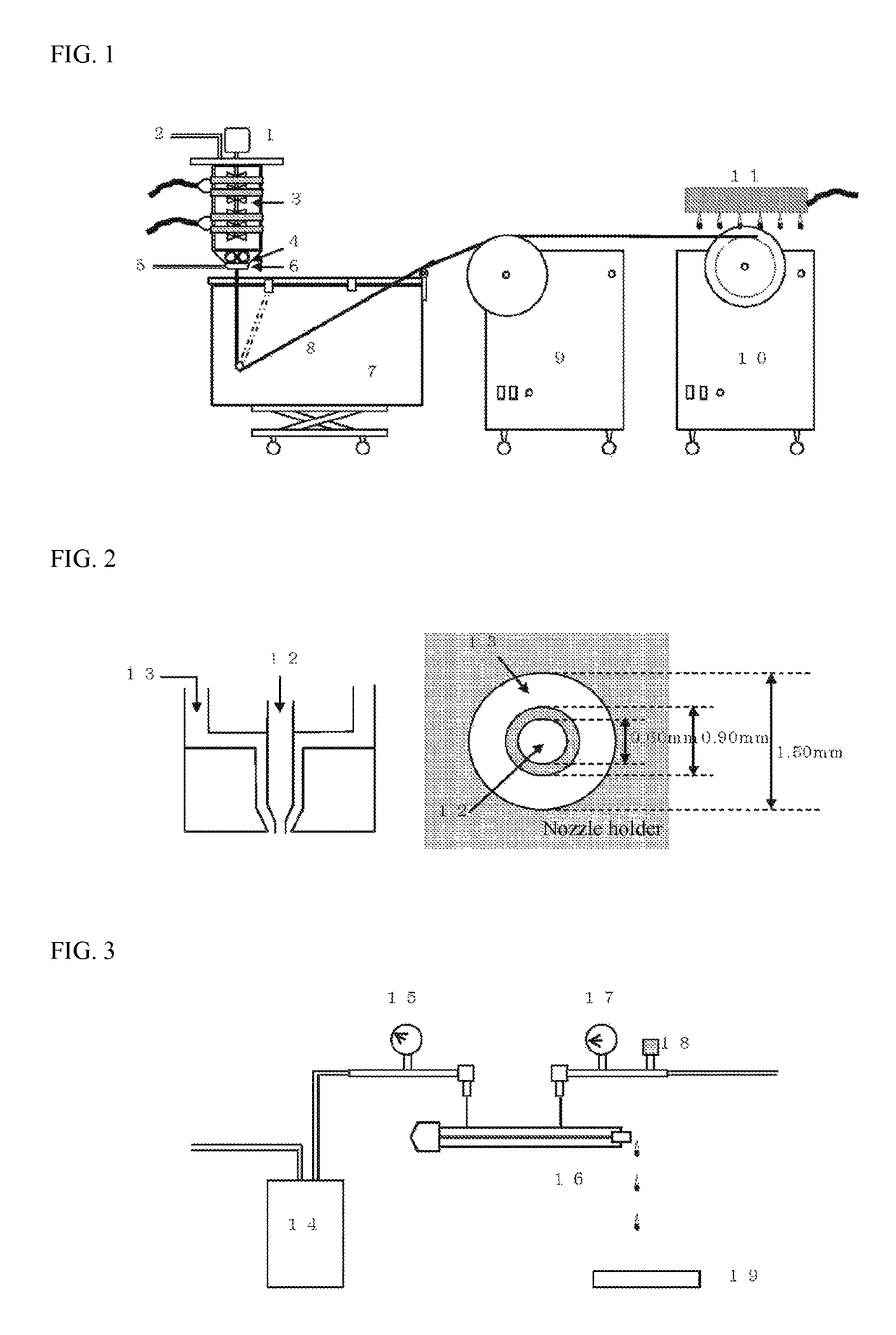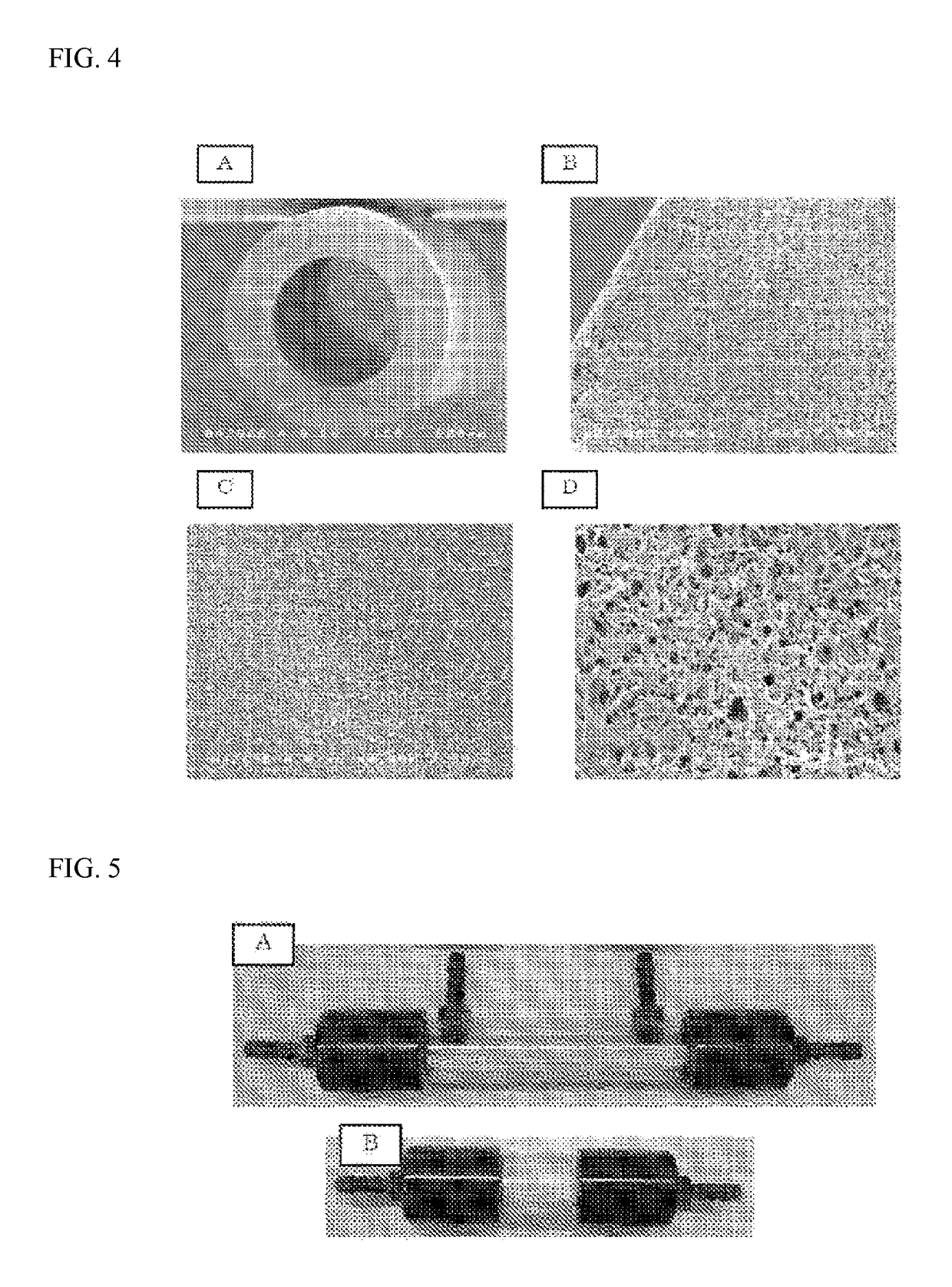Porous polyamide hollow fiber membrane having very small pore diameter, and method for producing same
a polyamide and hollow fiber technology, applied in the field of polyamide hollow fiber membranes, can solve the problems of reduced water permeability, loss of useful proteins, change in flavor, etc., and achieve the effect of suppressing flow reduction and high flow ra
- Summary
- Abstract
- Description
- Claims
- Application Information
AI Technical Summary
Benefits of technology
Problems solved by technology
Method used
Image
Examples
example 1
[0107]A liquid for membrane formation was prepared by stirring 260 g of polyamide 6 chips (A1030BRT available from UNITIKA LTD., relative viscosity 3.53), 197 g of sulfolane (available from Tokyo Chemical Industry), and 543 g of dimethylsulfone (available from Tokyo Chemical Industry) at 180° C. for 1.5 hours to dissolve the chips. The liquid for membrane formation was transferred to a spinneret (a double-pipe nozzle for hollow fiber production having a double-pipe structure) through a metering pump, and extruded at 5 g / min. The spinneret had an outside diameter of 1.5 mm and an inside diameter of 0.6 mm. Glycerin was used as an inner fluid, and was passed at a rate of 2.0 g / min. The extruded liquid for spinning was introduced into a coagulation bath containing a 5° C. 50 mass % propylene glycol solution through an air gap of 10 mm, cooled to solidify, and taken up at a take-up speed of 20 m / min. The obtained hollow fiber was immersed in water for 24 hours, whereby the solvent was e...
example 2
[0110]A polyamide hollow fiber membrane was prepared in the same manner as in Example 1, except that the coagulation bath was changed to a 5° C. 50 mass % glycerin. As shown in Table 1, the obtained polyamide hollow fiber membrane had a contact angle of 520, water permeability of 410 L / (m2·atm·h), and 10 nm particle blocking rate of 98%.
example 3
[0111]A polyamide hollow fiber membrane was prepared in the same manner as in Example 1, except that the coagulation bath was changed to an equal-weight mixture of glycerin and ethylene glycol. As shown in Table 1, the obtained polyamide hollow fiber membrane had a contact angle of 52°, water permeability under external pressure of 200 L / (m2·atm·h), and 10 nm particle blocking rate of 94%.
PUM
| Property | Measurement | Unit |
|---|---|---|
| contact angle | aaaaa | aaaaa |
| pore size | aaaaa | aaaaa |
| pore size | aaaaa | aaaaa |
Abstract
Description
Claims
Application Information
 Login to View More
Login to View More - R&D
- Intellectual Property
- Life Sciences
- Materials
- Tech Scout
- Unparalleled Data Quality
- Higher Quality Content
- 60% Fewer Hallucinations
Browse by: Latest US Patents, China's latest patents, Technical Efficacy Thesaurus, Application Domain, Technology Topic, Popular Technical Reports.
© 2025 PatSnap. All rights reserved.Legal|Privacy policy|Modern Slavery Act Transparency Statement|Sitemap|About US| Contact US: help@patsnap.com



